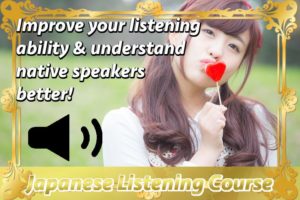なでる vs. さする:Most Learners Can’t Use Them Properly
What is the difference between “なでる(naderu) and さする(sasuru)”? Which is used as the meaning of “stroke”? Which is only used as the meaning of “prosper”? After reading this, you would be answering this question. Let me introduce what their subtle differences are and how you correctly use them such as native speakers today!
[wp-svg-icons icon=”checkmark-circle” wrap=”i”] なでる(naderu)
[wp-svg-icons icon=”arrow-right-2″ wrap=”span”] Gently stroke, Pet / 抚摸 / 쓰다듬다 / Xoa, sờ
“なでる(naderu)” means “Gently stroke or Pet” and which has been used as the meaning of “to move a hand, another part of the body, or an object gently over something or someone, usually repeatedly and for pleasure”. The basic ways to use it are that “私___をなでる。(I gently stroke ___.)”, etc. For instance, “私は赤ちゃんの頭をなでる。(I gently stroke the baby’s head.)”, “私は子供のお腹をなでる。(I gently stroke the child’s stomach.)”, “私は犬をなでる。(I pet my dog.)”, etc. The tips for using it are that “なでる” is used as the meaning of “TO SHOW YOUR LOVE FOR SOMEONE OR SOMETHING”, “さする”. Everyone could use “なでる” as casual, polite and formal such as “赤ちゃんの頭をなでたよ。(I gently stroked the baby’s head.)” as casual and “赤ちゃんの頭をなでました。(I gently stroked the baby’s head.)” as polite and formal.
うちの犬はお腹をなでられるのが好きなの。 (My dog always wants me to gently stroke his tummy.) (我家的狗很喜欢被摸它肚子。) (우리 개는 배를 쓰다듬어주는 걸 좋아해.) (Con chó nhà tôi rất thích được xoa đầu.)
[/voice]
[voice icon=”http://jpyokoso.com/wp-content/uploads/2018/04/learn-japanese-online-how-to-speak-japanese-language-for-beginners-basic-study-in-japan-okawa22.jpg” name=”たつや” type=”l icon_blue” sample”]
子供の頭をなでるのが好きです。 (I like to gently stroke her head.) (我喜欢抚摸孩子的头部。) (아이 머리를 쓰다듬는 것을 좋아합니다.) (Tôi rất thích xoa đầu trẻ con.)
[/voice]
[voice icon=”http://jpyokoso.com/wp-content/uploads/2018/04/learn-japanese-online-how-to-speak-japanese-language-for-beginners-basic-study-in-japan-yuka79.jpg” name=”ゆか” type=”l icon_red” sample”]
赤のほっぺをなでました。 (I gently stroke the baby’s cheek.) (我摸了红红的脸蛋。) (발그스레한 뺨을 어루만졌습니다.) (Tôi đã xoa đôi má đỏ ửng.)
[/voice]
[voice icon=”http://jpyokoso.com/wp-content/uploads/2018/04/learn-japanese-online-how-to-speak-japanese-language-for-beginners-basic-study-in-japan-okawa70.jpg” name=”たつや” type=”l icon_blue” sample”]
かわいい猫だね!なでていい? (The cat is so cute! Can I pet your cat?) (好可爱的猫!可以摸一下吗?) (귀여운 고양이네! 쓰다듬어 봐도 돼?) (Thật là một con mèo dễ thương nhỉ! Tôi sờ nó được chứ?)
[/voice]
[wp-svg-icons icon=”checkmark-circle” wrap=”i”] さする(sasuru)
[wp-svg-icons icon=”arrow-right-2″ wrap=”span”] Give someone’s backrubs, Massage / 擦 / 어루만지다 / Xoa bóp
“さする(sasuru)” means “Give someone’s backrubs Or Massage” and which has been used as the meaning of “a form of massage in which the masseur rubs especially one’s back”. The basic ways to use it are that “私___の背中をさする。(I give ___ backrubs.)”, etc. For instance, “私は彼の背中をさする。(I give his backrubs.)”, “私は子供の背中をさする。(I give the child’s backrubs.)”, etc. The tips for using it are that “さする” is used for “TO EASE THE PAIN, THEIR SAD FEELING, BAD FEELING AFTER DRINKING, etc”, “なでる”. Everyone could use “さする” as casual, polite and formal such as “子供の背中をさすったよ。(I gave the child’s backrubs.)” as casual and “子供の背中をさすりました。(I gave the child’s backrubs.)” as polite and formal.
気持ち悪いの?さすろっか? (You don’t feel well? Do you want me to give your backrubs?) (不舒服吗?我给你搓一下?) (기분 안 좋아? 쓰다듬어 줄까?) (Bạn có cảm thấy khó chịu không? Tôi xoa bóp cho bạn nhé?)
[/voice]
[wp-svg-icons icon=”headphones” wrap=”i”] LISTENING COURSE Sample [wp-svg-icons icon=”headphones” wrap=”i”]
[wp-svg-icons icon=”spades” wrap=”i”]
Beginner
[kanren postid=”17071″]
[kanren postid=”16988″]
[kanren postid=”16890″]
[kanren postid=”16989″]
 |  |

Comments